2014
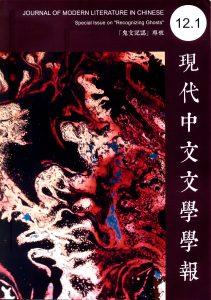 With their themes of ghosts, violence and monstrosity, horror films have been instrumental in capturing the ghostly returns of collective trauma. Thai horror, unsurprisingly, also cannot disassociate itself from history. Through their ghosts and, more recently, through their turn to “body horror,” contemporary Thai horror films come to terms with the “wounds” in the country’s social fabric. The strategies of archivization of Thai history and cultural memory used in these films vary, since some traumatic incidents in Thai history have been denied the right to be remembered by the state apparatus. Other, less politically-repressed events, such as murders, accidents, or cases of gross negligence are meticulously reconstructed from available authentic sources and reproduced in Thai horror films, which take on the function of becoming the archives of Thai popular memory. This article discusses Thai horror films’ strategies of archivization of Thailand’s past.
With their themes of ghosts, violence and monstrosity, horror films have been instrumental in capturing the ghostly returns of collective trauma. Thai horror, unsurprisingly, also cannot disassociate itself from history. Through their ghosts and, more recently, through their turn to “body horror,” contemporary Thai horror films come to terms with the “wounds” in the country’s social fabric. The strategies of archivization of Thai history and cultural memory used in these films vary, since some traumatic incidents in Thai history have been denied the right to be remembered by the state apparatus. Other, less politically-repressed events, such as murders, accidents, or cases of gross negligence are meticulously reconstructed from available authentic sources and reproduced in Thai horror films, which take on the function of becoming the archives of Thai popular memory. This article discusses Thai horror films’ strategies of archivization of Thailand’s past.

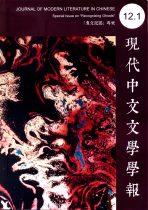
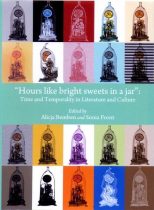
 This chapter discusses Bangkok time in line with the studies of city life that draw attention to the everyday experience, urban practices, movement, memory and performing the city, this paper engages in a discussion of temporal cities realized through the symbolic, ritualistic performance of their inhabitants and manifestations of collective memory on the example of Bangkok, a mega-metropolis known for its rather precarious relationship with reality. Though all four of Pile’s phantasmagorias can be successfully applied to a reimagining of Bangkok, this chapter will focus on the two most obvious categories – ghosts and magic, exploring their connection to the city’s past and present and the lingering temporalities they leave behind.
This chapter discusses Bangkok time in line with the studies of city life that draw attention to the everyday experience, urban practices, movement, memory and performing the city, this paper engages in a discussion of temporal cities realized through the symbolic, ritualistic performance of their inhabitants and manifestations of collective memory on the example of Bangkok, a mega-metropolis known for its rather precarious relationship with reality. Though all four of Pile’s phantasmagorias can be successfully applied to a reimagining of Bangkok, this chapter will focus on the two most obvious categories – ghosts and magic, exploring their connection to the city’s past and present and the lingering temporalities they leave behind.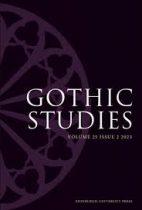
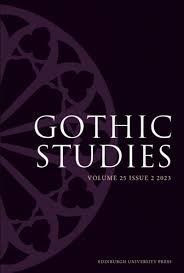 The waiting woman is a ghost who appears to be endlessly waiting – for recognition, for her lover, for a chance to reincarnate, or to exact revenge. In Asia, her roots can be found in early medieval Chinese records of the strange, arguably the oldest written ghost stories in the region. The romanticized version of this ghost, introduced in Tang Xianzu’s drama Peony Pavillion (Mudan ting, 1598), influenced many writers of Japanese kaidan (strange) stories and merged with East and Southeast Asian ghostlore that continues to inspire contemporary local fiction and films. The article proposes to read the figure of the waiting woman as a representation of the enduring myth of the submissive Asian femininity and a warning against the threat of possible female emancipation brought about by the socio-economic changes caused by modernisation.
The waiting woman is a ghost who appears to be endlessly waiting – for recognition, for her lover, for a chance to reincarnate, or to exact revenge. In Asia, her roots can be found in early medieval Chinese records of the strange, arguably the oldest written ghost stories in the region. The romanticized version of this ghost, introduced in Tang Xianzu’s drama Peony Pavillion (Mudan ting, 1598), influenced many writers of Japanese kaidan (strange) stories and merged with East and Southeast Asian ghostlore that continues to inspire contemporary local fiction and films. The article proposes to read the figure of the waiting woman as a representation of the enduring myth of the submissive Asian femininity and a warning against the threat of possible female emancipation brought about by the socio-economic changes caused by modernisation.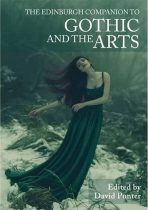
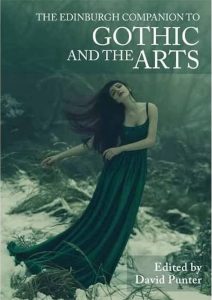 Installation art is always simultaneously material and ephemeral, comprised of tangible objects but also of light, sound, or air. Its existence is always temporary; it is overshadowed by its own death, ready to be dismantled and moved to the afterlife of a photographic or video record. In this sense, it exists predominantly as its own memory. This semi-spectral nature of installation art, seen as a temporary assemblage of parts always on a verge of collapse and disintegration, makes it particularly open to Gothic influences realised trough a choice of themes or conceptualisation of time and space. Although Gothic has never been specifically defined in the context of art, the visual nature of the Gothic aesthetics makes the two compatible. This chapter highlights the work of several twentieth and twenty-first century artists to examine different ways installation art engages with the Gothic. The discussion focuses on the formal qualities of Gothic installations, particularly the construction of Gothic objects and bodies through the use of forms and media that can be seen as impure or abject, and the way these installations evoke the fragmented, oppressive, and disassociated spaces of Gothic and embrace the temporality directed towards memory, history, impermanence, death, and haunting.
Installation art is always simultaneously material and ephemeral, comprised of tangible objects but also of light, sound, or air. Its existence is always temporary; it is overshadowed by its own death, ready to be dismantled and moved to the afterlife of a photographic or video record. In this sense, it exists predominantly as its own memory. This semi-spectral nature of installation art, seen as a temporary assemblage of parts always on a verge of collapse and disintegration, makes it particularly open to Gothic influences realised trough a choice of themes or conceptualisation of time and space. Although Gothic has never been specifically defined in the context of art, the visual nature of the Gothic aesthetics makes the two compatible. This chapter highlights the work of several twentieth and twenty-first century artists to examine different ways installation art engages with the Gothic. The discussion focuses on the formal qualities of Gothic installations, particularly the construction of Gothic objects and bodies through the use of forms and media that can be seen as impure or abject, and the way these installations evoke the fragmented, oppressive, and disassociated spaces of Gothic and embrace the temporality directed towards memory, history, impermanence, death, and haunting.